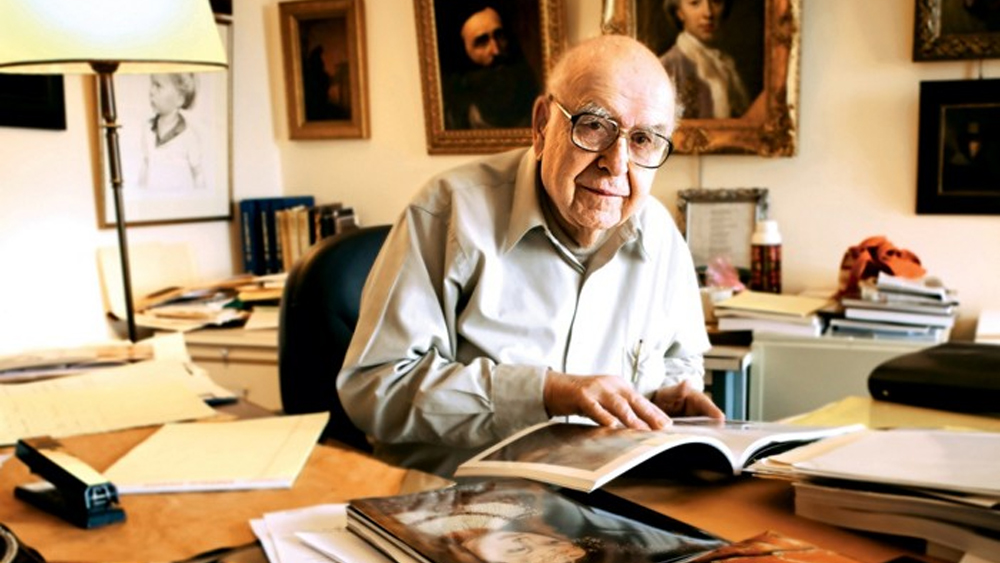
There is never a good time to write about the loss of a friend. And though I knew him for only a short time, Dr. Alfred Bader was a friend to us all in the Milwaukee Art Museum family. News of his passing, on December 23, brought a weighted pause to the celebrations this past holiday season. Articles in the Journal Sentinel and Business Journal cover the biography and accomplishments of Dr. Bader—chemist, businessman, and philanthropist—a man who helped build Milwaukee’s industry and enrich its culture. It is as an avid collector and supporter of art that Dr. Bader will forever be honored at the Museum.
First becoming a Member in 1952, he was instrumental to the Museum and, specifically, its European art collection. More than half a century later, his legacy includes the thirty exquisite works he gifted to the Museum and the endowment of the position of Isabel and Alfred Bader Curator of European Art—a post currently held by Tanya Paul. Dr. Bader once said that his passion for collecting “began with stamps at 8, drawings at 10, paintings at 20, and rare chemicals at 30.” Our experiences of Baroque art are richer for his inveterate collecting.
Dr. Bader made his first gifts to the Museum in 1961. The European art galleries on level one feature Govaert Flinck’s Portrait of a Man and Portrait of a Woman (1648), a pair of pendant portraits that Dr. Bader and his first wife, Helen Daniels Bader, donated in 1963. The adjacent galleries include other gifts, from the 1960s and 1970s, such as Gaetano Cusati’s luscious Still Life with Fish (ca. 1710) and Antiveduto Gramatica’s quietly moving St. Dorothy (n.d.).
More recently, in 1991, Dr. Bader and his wife, Isabel, gave intriguing works such as Adriaen van Nieulandt the Younger’s Orpheus (n.d.), which once formed the lid of a clavichord or harpsichord—as revealed by the exhibition they guest curated in 1989. In the past few years, the Baders have donated an additional group of paintings, including, in 2018, a Rembrandt School painting of St. Bartholomew (17th century) that used to hang next to Dr. Bader’s chair in his home.

The exhibition The Detective’s Eye: Investigating the Old Masters (1989), which featured van Nieulandt the Younger’s Orpheus, was one of two that Dr. Bader helped organize here at the Museum. That project, along with the first exhibition he guest curated, The Bible Through Dutch Eyes (1976), is a testament to Dr. Bader’s natural curiosity, his willingness to tirelessly research a challenging painting, and his belief in the fundamental importance of scholarship and connoisseurship. In addition to acting as a guest curator on these projects, Dr. Bader was always a generous lender to Museum exhibitions, from major enterprises such as Jan Lievens: A Dutch Master Rediscovered (2009), to smaller projects such as The Bloemaert Legacy (2014) and From Rembrandt to Parmigianino (2016).
“When I first arrived at the Museum, in 2013,” shares Tanya Paul, “I was honored to be the first Isabel and Alfred Bader Curator of European Art at the Milwaukee Art Museum. Alfred was such a monumental figure in the field of Dutch art, and I felt a tremendous sense of responsibility in accepting the position. As my time in Milwaukee progressed, and I grew to know Alfred and Isabel better, they became like family to me, and welcomed me warmly into their home each time I came to visit. As a curator, I will miss his deep art historical knowledge, his ready opinions, and his bottomless curiosity about the art of the Dutch Republic. On a personal level, I will miss his insight, his humor, his gifts as a storyteller, and the kindness he always showed me. The community has suffered an inestimable loss with Alfred’s passing.”
Dr. Bader’s long involvement with the Museum is easily best remembered by Barbara Brown Lee, whose more than fifty-five years in the education department meant she often worked directly with him:
Dr. Bader was a name I’d heard bandied about when I first started at the Museum, in January of 1963. I later discovered that he gave wonderful lectures, and he, of course, loaned some of his works for display in the galleries. At that time, we didn’t have a lot of people that knew about the old masters he had in his collection, so Dr. Bader was our best resource. When he curated The Bible Through Dutch Eyes, in 1976, and The Detective’s Eye, in 1989, that’s when I had the chance to actually work with him, to finally get to know him. We worked around the clock, but we had so much fun, and I learned so much. I have very fond memories of working with him on those shows. Later, when he opened a gallery, he’d call me over there to see his newest finds and talked to me about them. He never tired of art history and the works. My life at the Museum through the years has only been enriched by listening to and learning from patrons like Dr. Bader.

Dr. Bader clearly left an indelible impression on the Museum, its people, and the community. I know I speak for everyone at the Museum in wishing my heartfelt sympathies to his wife, Isabel, his children, David and Daniel, and his other loving relatives and dear friends.
Fondly,
Marcelle Polednik, PhD
Donna and Donald Baumgartner Director



One reply on “Remembering Dr. Alfred Bader”
That’s a real loss, RIP Dr. Alfred Bader